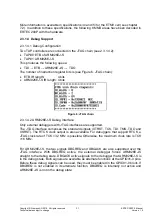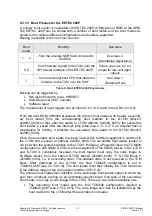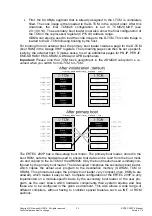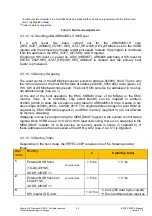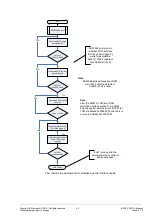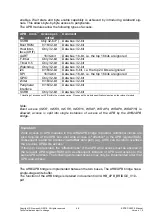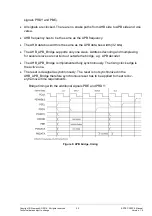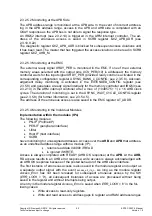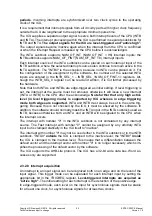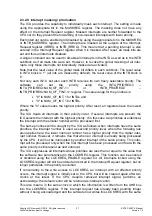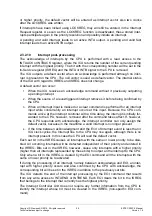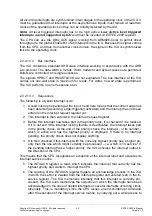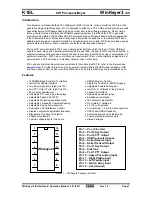
Copyright © Siemens AG 2016. All rights reserved
45
ERTEC 200P-2 Manual
Technical data subject to change
Version 1.0
The AHB slave modules allow the following types of access:
AHB module (slave)
Access permit-
ted
Comment
PN-IP *)
8/16/32-bit
Data bus: 32-bit
Peripheral interface
8/16/32-bit
Data bus: 32-bit
EMC memory
8/16/32-bit
Data bus: 32-bit
EMC register
8/16/32-bit
Data bus: 32-bit
GDMA (RAM + Regis-
ter)
Only 32-bit
Data bus: 32-bit
ARM-ICU
Only 32-bit
Data bus: 32-bit
ARM926 - TCM
8/16/32-bit
Data bus: 32-bit
ARM926 - ETB
8/16/32-bit
Data bus: 32-bit
*) Handling of access over AHB within the modules varies. Please see the module specifications/section on the relevant module.
2.3.2.3.1
AHB Arbiters
Each of the AHB arbiters uses the same arbitration procedure. The default setting is
round robin. A fixed priority assignment for the AHB masters (see
) could be used as an alternative arbitration algorithm by program-
ming the ARB_MODE bit in the SCRB register M_LOCK_CTRL (see 2.3.10.9.22). This
option should not, however, be implemented in the light of the dynamic processes at the
multi-layer AHB.
Using round robin as the arbitration procedure prevents the AHB masters from blocking
each other at the multi-layer AHB for a prolonged period of time (cf. 2.3.2.3.2)
PRIORITIES
MASTER
NOTES
7
Host inter-
face
Highest priority
6
GDMA
5
PN-IP-M1
4
----
3
-----
2
ARM926-D
1
ARM926-I
Lowest priority
Table 6: Fixed priority assignment (no default)
2.3.2.3.2
AHB Multi-layer Configuration
The masters in the multi-layer AHB are not connected to all slaves. The table below
shows which AHB master is connected to which AHB slave.
S1
S2
S3
S5
S6
S7
S9
S10
S12
5
No fixed priority is assigned to the PN-IP-M2 master as the connection to the PER-PN-S10 is point-to-point. This
prevents a conflict from ever occurring at PER-PN-S10.

